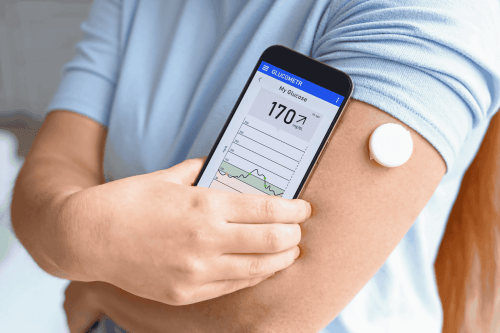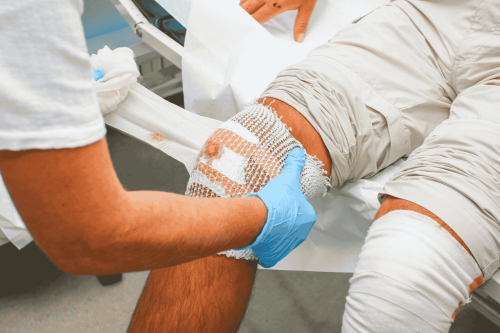The Struggle with COVID-19 Testing in the United States
Although the United States has one of the highest testing capacities for COVID-19 in the world, U.S. COVID-19 testing is still falling short. Why are labs struggling to keep up, and why are many patients waiting longer than usual to receive results?
The main issue labs are dealing with is a bottleneck in the supply chain. Labs are using automated detection equipment that includes tools and chemical kits produced by only a few manufacturers. As coronavirus cases soar, labs are finding themselves below capacity.
Companies controlling this market include Roche, Cepheid, Abbott Laboratories, and Hologic Inc. The machines they produce with plastic disposable parts and chemical kits are only sold by them.
Geoffrey Baird of the medical lab at the University of Washington says, “The vendors are in an impossible situation right now where they can’t say yes to everyone.”
According to multiple estimations, the U.S. needs anywhere from 6-10 million tests daily; however, we only run about 800,000 a day.
Congress allocated $11 billion for testing in the United States. States have also been working with the government to get enough supplies and equipment. On the other hand, health officials still need to focus on the bottleneck in the supply chain to fix this issue.
Other countries have not experienced shortages to the same extent because they use less automated testing equipment.
A Complicated Resolution
At the beginning of the pandemic, testing consisted of taking a genetic sample using an instrument, and then use a machine for identification.
Labs are now straying away from this method. They are now using automated testing, also called “sample-to-answer.” Experts deem this as insufficient due to a lack of supplies.
Mia Heck, the spokeswoman for the U.S. Department of Health and Human Services, stated: “As a result of working directly with companies to improve their supply chain, eliminate barriers, and investing through the Defense Production Act, we do expect supplies of each of these platforms to increase in the fall.”
Experts have made it clear that there is not one, easy solution to improve COVID-19 testing in the U.S.
China has begun merging patient samples to save supplies. This allowed the country to test millions of people. However, experts have explained this method increases false results and can be unproductive with widespread disease.
In Canada, a domestic supply chain for the chemicals used in multi-step tests is underway. This method is beneficial only in countries with much lower case counts.
Alex Greninger, the assistant director of the clinical virology laboratories at the University of Washington’s Medical Center, explained, “When you’re asked to process more than 1,000 samples a day – or more than 4,000 as we are now doing – you have to do some of it on sample-to-answer platforms.”
Testing Machines
Companies like Roche, Cepheid, Abbott Laboratories, and Hologic Inc. were selling coronavirus tests for their automated machines by the end of April. This has been a key factor in controlling the pandemic in the U.S.
The Hologic’s Panther machine has the ability to process about 1,000 tests in just 24 hours. States want this machine to increase testing.
“The demand has been amazing. We feel very proud of the role we’re playing,” stated the CEO of Hologic, Stephen MacMillan. According to Stephen, Hologic “had virtually every governor in the U.S. just talk to us directly over the last few weeks, months, pleading their case for why they need more.”
About 51 Panthers have been purchased by multiple states and cities around the country. The issue with this, however, is that Hologic is not producing enough testing kits. The existing machines have the ability to run about 33 million tests each month, yet Hologic makes a little under 5 million.
The company has expressed the hard work it is putting in to expand its manufacturing.
Another popular testing machine is the GeneXpert from Cepheid. Around the world, there are approximately 250,000 machines.
The Use of Multiple Suppliers
Leaders in Arkansas sent a letter to Vice President Mike Pence expressing that their hospitals are only testing at 10% capacity. This is due to a shortage of essential equipment.
Vendors have expressed that they are doing the best they can to increase production and U.S. COVID-19 testing capacity. Labs are beginning to use other vendors to have more supplies available. This still causes labs to have a lower testing capacity.
A survey done by the Association for Molecular Pathology showed that 57% of laboratories do testing with at least 3 different companies’ machines and equipment.
The increase in coronavirus cases has caused issues for U.S. COVID-19 testing. Companies and labs are doing all they can to ramp up production and increase testing capacity.
Referenced Article:
Martell, A., & Parker, N. (2020, June 27). The U.S. has more COVID-19 testing than most. So why is it falling so short? Retrieved from https://www.reuters.com/article/us-health-coronavirus-usa-testing-insigh-idUSKCN24S19H



